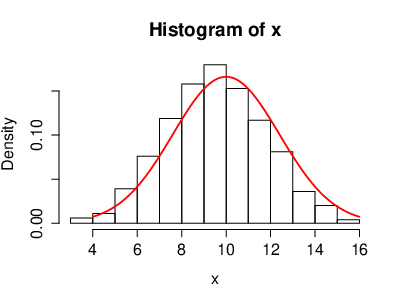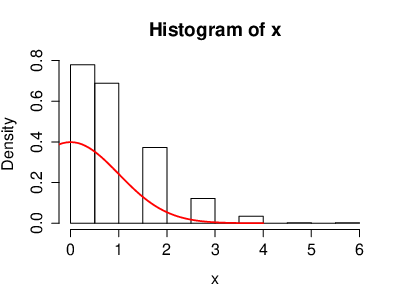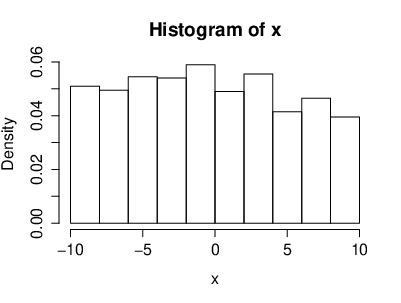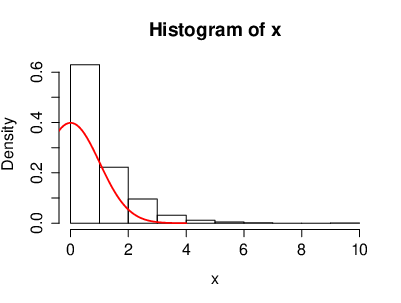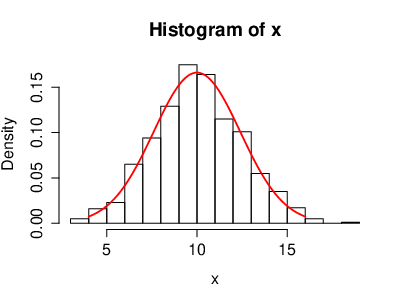guide:B2ca5f4636: Difference between revisions
No edit summary |
No edit summary |
||
| Line 1: | Line 1: | ||
<div class="d-none"><math> | |||
\newcommand{\R}{\mathbb{R}} | |||
\newcommand{\A}{\mathcal{A}} | |||
\newcommand{\B}{\mathcal{B}} | |||
\newcommand{\N}{\mathbb{N}} | |||
\newcommand{\C}{\mathbb{C}} | |||
\newcommand{\Rbar}{\overline{\mathbb{R}}} | |||
\newcommand{\Bbar}{\overline{\mathcal{B}}} | |||
\newcommand{\Q}{\mathbb{Q}} | |||
\newcommand{\E}{\mathbb{E}} | |||
\newcommand{\p}{\mathbb{P}} | |||
\newcommand{\one}{\mathds{1}} | |||
\newcommand{\0}{\mathcal{O}} | |||
\newcommand{\mat}{\textnormal{Mat}} | |||
\newcommand{\sign}{\textnormal{sign}} | |||
\newcommand{\CP}{\mathcal{P}} | |||
\newcommand{\CT}{\mathcal{T}} | |||
\newcommand{\CY}{\mathcal{Y}} | |||
\newcommand{\F}{\mathcal{F}} | |||
\newcommand{\mathds}{\mathbb}</math></div> | |||
Let <math>(\Omega,\A,\p)</math> denote a probability space and let <math>X:(\Omega,\A,\p)\to(E,\mathcal{E})</math> be a r.v. taking values in some measureable space <math>(E,\mathcal{E})</math>. | |||
===Discrete distributions=== | |||
====The uniform distribution==== | |||
Let <math>\vert E\vert < \infty</math>. A r.v. <math>X</math> with values in <math>E</math> is said to be uniform on <math>E</math> if <math>\forall x\in E</math> | |||
<math display="block"> | |||
\p[X=x]=\frac{1}{\vert E\vert}. | |||
</math> | |||
====The Bernoulli distribution with parameter <math>p\in[0,1]</math>==== | |||
This is a r.v. <math>X</math> with values in <math>\{0,1\}</math> such that | |||
<math display="block"> | |||
\p[X=1]=p,\p[X=0]=1-p. | |||
</math> | |||
The r.v. <math>X</math> can be interpreted as the outcome of a coin toss. The expectation of <math>X</math> is then given by | |||
<math display="block"> | |||
\E[X]=0\cdot\p[X=0]+1\cdot\p[X=1]. | |||
</math> | |||
====The Binomial distribution <math>\B(n,p)</math>, <math>n\in \N</math>, <math>n\geq 1</math>, <math>p\in[0,1]</math>==== | |||
This is the distribution of a r.v. <math>X</math> taking its values in <math>\{0,1,...,n\}</math> such that | |||
<math display="block"> | |||
\p[X=k]=\binom{n}{k}p^k(1-p)^{n-k}. | |||
</math> | |||
<div id="" class="d-flex justify-content-center"> | |||
[[File:guide_fe641_binom_distr.png | 400px | thumb | Histogram of a binomial distributed r.v. ]] | |||
</div> | |||
The r.v. <math>X</math> is interpreted as the number of heads of the <math>n</math> tosses of the previous case. One has to check that its a probability distribution: | |||
<math display="block"> | |||
\sum_{k=0}^n\p[X=k]=\sum_{k=0}^n\binom{n}{k}p^k(1-p)^{n-k}=(p+(1-p))^n=1. | |||
</math> | |||
The expected value for the binomial distribution is given by | |||
<math display="block"> | |||
\begin{align*} | |||
\E[X]=\sum_{k=0}^nk\p[X=k]&=\sum_{k=0}^nk\binom{n}{k}p^k(1-p)^{n-k}=np\sum_{k=0}^nk\frac{(n-1)!}{(n-k)!k!}p^{k-1}(1-p)^{(n-1)-(k-1)}\\ | |||
&=np\sum_{k=1}^n\frac{(n-1)!}{(n-k)!(k-1)!}p^{k-1}(1-p)^{(n-1)-(k-1)}\\ | |||
&=np\sum_{k=1}^n\binom{n-1}{k-1}p^{k-1}(1-p)^{(n-k)-(k-1)}\\ | |||
&=np\sum_{l=0}^{n-1}\binom{n-1}{l}p^l(1-p)^{(n-1)-l},(l:=k-1)\\ | |||
&=np\sum_{l=0}^m\binom{m}{l}p^l(1-p)^{m-l},(m:=n-1)=np(p+(1-p))^m=np | |||
\end{align*} | |||
</math> | |||
====The Geometric distribution with parameter <math>p\in[0,1]</math>==== | |||
This is a r.v. <math>X</math> with values in <math>\N</math> such that | |||
<math display="block"> | |||
\p[X=k]=(1-p)p^k. | |||
</math> | |||
The r.v. <math>X</math> can be interpreted as the number of heads obtained before tail shows for the first time. It is also a probability distribution, since | |||
<math display="block"> | |||
\sum_{k=0}^\infty\p[X=k]=\sum_{k=0}^\infty(1-p)p^k=(1-p)\sum_{k=0}^\infty p^k=\frac{1-p}{1-p}=1. | |||
</math> | |||
====The Poisson distribution with parameter <math>\lambda > 0</math>==== | |||
This is a r.v. <math>X</math> with values in <math>\N</math> such that | |||
<math display="block"> | |||
\p[X=k]=e^{-\lambda}\frac{\lambda^k}{k!},k\in\N. | |||
</math> | |||
<div id="" class="d-flex justify-content-center"> | |||
[[File:guide_fe641_poisson_distr.png | 400px | thumb | Histogram of a poisson distributed r.v. ]] | |||
</div> | |||
The Poisson distribution is very important, both from the point of view of applications and from the theoretical point of view. Intuitively it describes the number of rare events that have occurred during a long period. If <math>X_n\sim \B(n,p_n)</math> and if <math>np_n\xrightarrow{n\to\infty}\lambda > 0</math>, i.e. <math>p_n\sim \frac{\lambda}{n}</math> for <math>n\geq 1</math>, then for every <math>k\in\N</math> | |||
<math display="block"> | |||
\p[X_n=k]\xrightarrow{n\to\infty} e^{-\lambda}\frac{\lambda^k}{k!}. | |||
</math> | |||
The expected value is then given by | |||
<math display="block"> | |||
\E[X]=\sum_{k=0}^\infty k\frac{\lambda^k}{k!}e^{-\lambda}=\lambda e^{-\lambda}\sum_{k=1}^\infty\frac{\lambda^{k-1}}{(k-1)!}=\lambda e^{-\lambda}\sum_{j=0}\frac{\lambda^j}{j!}=\lambda. | |||
</math> | |||
===Absolutely continuous distributions=== | |||
Let now <math>E\subset\R</math>. The question here is about the densities <math>P(x)</math> of a certain distributed r.v. in the continuous case. | |||
====The uniform distribution on <math>[a,b]</math>==== | |||
The density of a continuous, uniformly distributed r.v. <math>X</math> is given by | |||
<math display="block"> | |||
P(x)=\frac{1}{b-a}\one_{[a,b]}(x). | |||
</math> | |||
<div id="" class="d-flex justify-content-center"> | |||
[[File:guide_fe641_uniform_distr.png | 400px | thumb | Histogram of a uniformly distributed r.v. ]] | |||
</div> | |||
We want to check that it is a probability density. We have to check that <math>\int_\R P(x)dx=1</math>, so we have | |||
<math display="block"> | |||
\int_{-\infty}^\infty P(x)dx=\int_{-\infty}^\infty \frac{1}{b-a}\one_{[a,b]}(x)dx=\frac{1}{b-a}\int_{-\infty}^\infty\one_{[a,b]}(x)dx=\frac{1}{b-a}(b-a)=1. | |||
</math> | |||
Hence it's a probability density. If <math>X</math> is uniform on <math>[a,b]</math>, then <math>\vert X\vert\leq \vert a\vert +\vert b\vert < \infty</math> a.s. and <math>\E[\vert a\vert +\vert b\vert ]=\vert a\vert +\vert b\vert < \infty\Longrightarrow \E[X] < \infty</math>. The expectation is given by | |||
<math display="block"> | |||
\E[X]=\int_{-\infty}^{\infty}xP(x)dx=\int_{-\infty}^\infty\frac{1}{b-a}\one_{[a,b]}(x)dx=\frac{1}{b-a}\int_a^bxdx=\frac{1}{b-a}\frac{1}{2}(b^2-a^2)=\frac{a+b}{2}. | |||
</math> | |||
====The Exponential distribution with parameter <math>\lambda > 0</math>==== | |||
The density is given by | |||
<math display="block"> | |||
P(x)=\lambda e^{-\lambda x}\one_{\R^+}(x), | |||
</math> | |||
with <math>X\geq 0</math> a.s. The expectation is given by | |||
<math display="block"> | |||
\E[X]=\int_{-\infty}^\infty xP(x)dx=\int_{0}^\infty x\lambda e^{-\lambda x}dx=\lambda\int_0^\infty xe^{-\lambda x}dx. | |||
</math> | |||
With <math>u=\lambda x</math> we get <math>dx=\frac{du}{\lambda}</math> and hence | |||
<math display="block"> | |||
\lambda\int_0^\infty \frac{u}{\lambda}e^{-u}\frac{du}{\lambda}=\frac{1}{\lambda}\int_0^\infty ue^{-u}du=\frac{1}{\lambda}. | |||
</math> | |||
If <math>a,b > 0</math>, then | |||
<math display="block"> | |||
\p[X > a+b]=\int_{a+b}^\infty \lambda e^{-\lambda x}dx=\lambda\left[-\frac{1}{\lambda}e^{-\lambda x}\right]_{a+b}^\infty=e^{-\lambda(a+b)}=e^{-\lambda a}e^{-\lambda b}=\p[X > a]\p[X > b]. | |||
</math> | |||
<div id="" class="d-flex justify-content-center"> | |||
[[File:guide_fe641_exp_distr.png | 400px | thumb | Histogram of an exponentially distributed r.v. ]] | |||
</div> | |||
Note that | |||
<math display="block"> | |||
\p[X < 0]=\E[\one_{\{X < 0\}}]=\int_{-\infty}^\infty\one_{\{x < 0\}}P(x)dx=\int_{-\infty}^\infty\one_{\{x < 0\}}\lambda e^{-\lambda x}\one_{\{x\geq 0\}}dx=0 | |||
</math> | |||
and also that | |||
<math display="block"> | |||
\p[X=x]=\int_{-\infty}^{\infty} \one_{\{y=x\}}P(y)dy=0. | |||
</math> | |||
====The Gaussian distribution <math>\mathcal{N}(m,\sigma^2)</math>, <math>m\in\R</math>, <math>\sigma > 0</math>==== | |||
The density is given by | |||
<math display="block"> | |||
P(x)=\frac{1}{\sigma\sqrt{2\pi}}\exp\left(-\frac{(x-m)^2}{2\sigma^2}\right). | |||
</math> | |||
This is the most important distribution in probability theory. We have to check that <math>P(x)</math> is a probability density, i.e. | |||
<math display="block"> | |||
\int_{-\infty}^\infty\frac{1}{\sigma\sqrt{2\pi}}\exp\left(-\frac{(x-m)^2}{2\sigma^2}\right) dx=1. | |||
</math> | |||
<div id="" class="d-flex justify-content-center"> | |||
[[File:guide_fe641_gauss_distr.png | 400px | thumb | Histogram of a Gaussian distributed r.v. ]] | |||
</div> | |||
We set <math>u=x-m</math> and hence <math>du=dx</math>. So we get | |||
<math display="block"> | |||
\int_{-\infty}^{\infty}\frac{1}{\sigma\sqrt{2\pi}}e^{-\frac{u^2}{2\sigma^2}}du. | |||
</math> | |||
Now we set <math>t=\frac{u}{\sigma}</math> and hence <math>du=\sigma dt</math>. So now we get | |||
<math display="block"> | |||
\int_{-\infty}^\infty \frac{1}{\sigma\sqrt{2\pi}}e^{-\frac{t^2}{2}}\sigma dt=\frac{1}{\sqrt{2\pi}}\int_{-\infty}^\infty e^{-\frac{t^2}{2}}dt=\frac{\sqrt{2\pi}}{\sqrt{2\pi}}=1. | |||
</math> | |||
We have used the fact that <math>\int_{-\infty}^{\infty}e^{-\frac{x^2}{2}}dx=\sqrt{2\pi}</math>, by change of coordinates from cartesian coordinates to polar coordinates. Consider <math>\mathcal{N}(0,1)</math> with density <math>P(x)=\frac{1}{\sqrt{2\pi}}e^{-\frac{x^2}{2}}</math>. It is called the standard Gaussian distribution (<math>m=0</math>, <math>\sigma=1</math>). We note that if <math>X</math> is distributed according to <math>\mathcal{N}(m,\sigma^2)</math>, then | |||
<math display="block"> | |||
\E[X]=m,\text{and}\E[(X-m)^2]=\sigma^2. | |||
</math> | |||
Indeed we have | |||
<math display="block"> | |||
\E[\vert X\vert]=\int_{-\infty}^{\infty}\vert x\vert\frac{1}{\sigma\sqrt{2\pi}}\exp\left(-\frac{(x-m)^2}{2\sigma^2}\right)dx < \infty | |||
</math> | |||
and therefore | |||
<math display="block"> | |||
\E[X]=\int_{-\infty}^\infty x\frac{1}{\sigma\sqrt{2\pi}}\exp\left(-\frac{(x-m)^2}{2\sigma^2}\right)dx. | |||
</math> | |||
We set <math>u=x-m</math> and hence <math>du=dx</math>. So we get | |||
<math display="block"> | |||
\int_{-\infty}^{\infty}\frac{(u+m)}{\sigma\sqrt{2\pi}}e^{-\frac{u^2}{2\sigma^2}}du=\underbrace{\int_{-\infty}^\infty\frac{u}{\sigma\sqrt{2\pi}}e^{-\frac{u^2}{2\sigma^2}}du}_{=0}+\underbrace{m\int_{-\infty}^\infty \frac{1}{\sigma\sqrt{2\pi}}e^{-\frac{u^2}{2\sigma^2}}du}_{=m}. | |||
</math> | |||
Therefore we get <math>\E[X]=m</math>. One can show similarly that <math>\E[(X-m)^2]=\sigma^2</math>. | |||
===The distribution function=== | |||
Let <math>X:\Omega\to\R</math> be a real valued r.v. The distribution function of <math>X</math> is the function | |||
<math display="block"> | |||
F_X:\R\to[0,1],t\mapsto F_X(t):=\p[X\leq t]=\p_X[(-\infty,t)]. | |||
</math> | |||
We claim that <math>F_X</math> is increasing and right continuous. Meaning that | |||
<math display="block"> | |||
\lim_{t\to-\infty}F_X(t)=0,\lim_{t\to \infty}F_X(t)=1 | |||
</math> | |||
We can thus write | |||
<math display="block"> | |||
\p[a\leq X\leq b]=F_X(b)-\underbrace{F_X(a^-)}_{\lim_{t\to a\atop t < a}F_X(t)}\text{and thus}\p[a < X < b]=F(b^-)-F_X(a), | |||
</math> | |||
Moreover, for a single value we get | |||
<math display="block"> | |||
\p[X=a]=F_X(a)-F_X(a^-), | |||
</math> | |||
which is called the jump of the function <math>F_X</math>. | |||
If <math>X</math> and <math>Y</math> are two r.v.'s, such that <math>F_X(t)=F_Y(t)</math>, then <math>\p_X=\p_Y</math> (this is a consequence of the monotone class theorem). If <math>F</math> is an increasing and right continuous function, then the set | |||
<math display="block"> | |||
A=\{a\in\R\mid F(a)\not=F(a^-)\} | |||
</math> | |||
is at most countable. If <math>\p_X</math> is absolutely continuous, then | |||
<math display="block"> | |||
\p_X[\{ a\}]=\p[X=a]=0, | |||
</math> | |||
which implies that for all <math>a\in\R</math> we have <math>F_X(a)=F_X(a^-)</math> and hence <math>F_X</math> is continuous. An alternative point of view is to say that, if <math>P(x)</math> is the density of of <math>\p_X</math>, then | |||
<math display="block"> | |||
F_X(x)=\p_X[(-\infty,t]]=\int_\R\one_{(-\infty,t]}(x)P(x)dx=\int_{-\infty}^tP(x)dx, | |||
</math> | |||
is a continuous function of <math>t</math>. | |||
===<math>\sigma</math>-Algebras generated by a Random Variable=== | |||
Let <math>(\Omega,\A,\p)</math> be a probability space. Let <math>X</math> be a r.v. taking values in <math>(E,\mathcal{E})</math>, i.e. <math>X:(\Omega,\A,\p)\to(E,\mathcal{E})</math>. The <math>\sigma</math>-Algebra generated by <math>X</math>, denoted by <math>\sigma(X)</math>, is by definition the smallest <math>\sigma</math>-Algebra, which makes <math>X</math> measurable. So we have | |||
<math display="block"> | |||
\sigma(X)=\{A=X^{-1}(B)\mid B\in\mathcal{E}\}. | |||
</math> | |||
{{alert-info | | |||
One can of course extend this definition to the case of a family of r.v.'s <math>X_i</math> for <math>i\in I</math>, taking values in <math>(E_i,\mathcal{E}_i)</math>. In this case we have | |||
<math display="block"> | |||
\sigma((X_i)_{i\in I})=\sigma(\{X_i^{-1}(B)\mid B_i\in\mathcal{E}_i,i\in I\}). | |||
</math> | |||
}} | |||
{{proofcard|Proposition|prop-1|Let <math>(\Omega,\A,\p)</math> be a probability space. Let <math>X</math> be a r.v. with values in a measure space <math>(E,\mathcal{E})</math> and let <math>Y</math> be a real valued r.v. Then the following are equivalent. | |||
<ul style{{=}}"list-style-type:lower-roman"><li><math>Y</math> is <math>\sigma(X)</math>-measurable. | |||
</li> | |||
<li>There exists a measurable map <math>f:(E,\mathcal{E})\to(\R,\B(\R))</math>, such that | |||
<math display="block"> | |||
Y=f(X). | |||
</math> | |||
</li> | |||
</ul> | |||
|So we have the following cases | |||
<math display="block"> | |||
X:(\Omega,\A,\p)\longrightarrow(E,\mathcal{E}),X:(\Omega,\sigma(X),\p)\longrightarrow (E,\mathcal{E}),Y:(\Omega,\A,\p)\longrightarrow (\R,\B(\R)) | |||
</math> | |||
<ul style{{=}}"list-style-type:lower-roman"><li><math>(2)\Longrightarrow (1)</math>: This follows from the fact that the composition of two measurable maps is measurable. | |||
</li> | |||
<li><math>(1)\Longrightarrow(2)</math>: Assume that <math>Y</math> is <math>\sigma(X)</math>-measurable. Assume first <math>Y</math> is simple, i.e. | |||
<math display="block"> | |||
Y=\sum_{i=1}^n\lambda_i\one_{A_i}(x),\forall i\{1,...,n\},\lambda_i\in\R,A_i\in\sigma(X). | |||
</math> | |||
Now by definition of <math>\sigma(X)</math>, there is a <math>\B_i\in\mathcal{E}</math>, such that <math>A_i\in X_i^{-1}(B_i)</math>, <math>\forall i\in\{1,...,n\}</math>. So it follows that | |||
<math display="block"> | |||
Y=\sum_{i=1}^n\lambda_i\one_{A_i}=\sum_{i=1}^n\lambda_i\one_{B_i}\circ X=f\circ X, | |||
</math> | |||
where <math>f=\sum_{i=1}^n\lambda_i\one_{B_i}</math> is <math>\mathcal{E}</math>-measurable. More generally, if <math>Y</math> is <math>\mathcal{E}</math>-measurable, there exists a seqence <math>(Y_n)</math> of simple functions such that <math>Y_n</math> is <math>\sigma(X)</math>-measurable and <math>Y_n\xrightarrow{n\to\infty} Y</math>. The above implies <math>Y_n=f_n(X)</math> when <math>f_n:E\to\R</math> is a measurable map. For <math>x\in E</math>, set | |||
<math display="block"> | |||
f(x)=\begin{cases}\lim_{n\to\infty}f_n(x),&\text{if the limit exists}\\ 0,&\text{otherwise}\end{cases} | |||
</math> | |||
Then <math>f</math> is measurable. Moreover for all <math>\omega \in\Omega</math> we get | |||
<math display="block"> | |||
X(\omega)\in\left\{x\mid \lim_{n\to\infty}f_n(x)\text{exists}\right\}, | |||
</math> | |||
since <math>\lim_{n\to\infty}f_n(X(\omega))=\lim_{n\to\infty}Y_n(\omega)=Y(\omega)</math> and <math>f(X(\omega))=\lim_{n\to\infty}f_n(X(\omega))</math>. Hence <math>Y=f(X)</math>. | |||
</li> | |||
</ul>}} | |||
==General references== | |||
{{cite arXiv|last=Moshayedi|first=Nima|year=2020|title=Lectures on Probability Theory|eprint=2010.16280|class=math.PR}} | |||
Latest revision as of 01:53, 8 May 2024
Let [math](\Omega,\A,\p)[/math] denote a probability space and let [math]X:(\Omega,\A,\p)\to(E,\mathcal{E})[/math] be a r.v. taking values in some measureable space [math](E,\mathcal{E})[/math].
Discrete distributions
The uniform distribution
Let [math]\vert E\vert \lt \infty[/math]. A r.v. [math]X[/math] with values in [math]E[/math] is said to be uniform on [math]E[/math] if [math]\forall x\in E[/math]
The Bernoulli distribution with parameter [math]p\in[0,1][/math]
This is a r.v. [math]X[/math] with values in [math]\{0,1\}[/math] such that
The r.v. [math]X[/math] can be interpreted as the outcome of a coin toss. The expectation of [math]X[/math] is then given by
The Binomial distribution [math]\B(n,p)[/math], [math]n\in \N[/math], [math]n\geq 1[/math], [math]p\in[0,1][/math]
This is the distribution of a r.v. [math]X[/math] taking its values in [math]\{0,1,...,n\}[/math] such that
The r.v. [math]X[/math] is interpreted as the number of heads of the [math]n[/math] tosses of the previous case. One has to check that its a probability distribution:
The expected value for the binomial distribution is given by
The Geometric distribution with parameter [math]p\in[0,1][/math]
This is a r.v. [math]X[/math] with values in [math]\N[/math] such that
The r.v. [math]X[/math] can be interpreted as the number of heads obtained before tail shows for the first time. It is also a probability distribution, since
The Poisson distribution with parameter [math]\lambda \gt 0[/math]
This is a r.v. [math]X[/math] with values in [math]\N[/math] such that
The Poisson distribution is very important, both from the point of view of applications and from the theoretical point of view. Intuitively it describes the number of rare events that have occurred during a long period. If [math]X_n\sim \B(n,p_n)[/math] and if [math]np_n\xrightarrow{n\to\infty}\lambda \gt 0[/math], i.e. [math]p_n\sim \frac{\lambda}{n}[/math] for [math]n\geq 1[/math], then for every [math]k\in\N[/math]
The expected value is then given by
Absolutely continuous distributions
Let now [math]E\subset\R[/math]. The question here is about the densities [math]P(x)[/math] of a certain distributed r.v. in the continuous case.
The uniform distribution on [math][a,b][/math]
The density of a continuous, uniformly distributed r.v. [math]X[/math] is given by
We want to check that it is a probability density. We have to check that [math]\int_\R P(x)dx=1[/math], so we have
Hence it's a probability density. If [math]X[/math] is uniform on [math][a,b][/math], then [math]\vert X\vert\leq \vert a\vert +\vert b\vert \lt \infty[/math] a.s. and [math]\E[\vert a\vert +\vert b\vert ]=\vert a\vert +\vert b\vert \lt \infty\Longrightarrow \E[X] \lt \infty[/math]. The expectation is given by
The Exponential distribution with parameter [math]\lambda \gt 0[/math]
The density is given by
with [math]X\geq 0[/math] a.s. The expectation is given by
With [math]u=\lambda x[/math] we get [math]dx=\frac{du}{\lambda}[/math] and hence
If [math]a,b \gt 0[/math], then
Note that
and also that
The Gaussian distribution [math]\mathcal{N}(m,\sigma^2)[/math], [math]m\in\R[/math], [math]\sigma \gt 0[/math]
The density is given by
This is the most important distribution in probability theory. We have to check that [math]P(x)[/math] is a probability density, i.e.
We set [math]u=x-m[/math] and hence [math]du=dx[/math]. So we get
Now we set [math]t=\frac{u}{\sigma}[/math] and hence [math]du=\sigma dt[/math]. So now we get
We have used the fact that [math]\int_{-\infty}^{\infty}e^{-\frac{x^2}{2}}dx=\sqrt{2\pi}[/math], by change of coordinates from cartesian coordinates to polar coordinates. Consider [math]\mathcal{N}(0,1)[/math] with density [math]P(x)=\frac{1}{\sqrt{2\pi}}e^{-\frac{x^2}{2}}[/math]. It is called the standard Gaussian distribution ([math]m=0[/math], [math]\sigma=1[/math]). We note that if [math]X[/math] is distributed according to [math]\mathcal{N}(m,\sigma^2)[/math], then
Indeed we have
and therefore
We set [math]u=x-m[/math] and hence [math]du=dx[/math]. So we get
Therefore we get [math]\E[X]=m[/math]. One can show similarly that [math]\E[(X-m)^2]=\sigma^2[/math].
The distribution function
Let [math]X:\Omega\to\R[/math] be a real valued r.v. The distribution function of [math]X[/math] is the function
We claim that [math]F_X[/math] is increasing and right continuous. Meaning that
We can thus write
Moreover, for a single value we get
which is called the jump of the function [math]F_X[/math]. If [math]X[/math] and [math]Y[/math] are two r.v.'s, such that [math]F_X(t)=F_Y(t)[/math], then [math]\p_X=\p_Y[/math] (this is a consequence of the monotone class theorem). If [math]F[/math] is an increasing and right continuous function, then the set
is at most countable. If [math]\p_X[/math] is absolutely continuous, then
which implies that for all [math]a\in\R[/math] we have [math]F_X(a)=F_X(a^-)[/math] and hence [math]F_X[/math] is continuous. An alternative point of view is to say that, if [math]P(x)[/math] is the density of of [math]\p_X[/math], then
is a continuous function of [math]t[/math].
[math]\sigma[/math]-Algebras generated by a Random Variable
Let [math](\Omega,\A,\p)[/math] be a probability space. Let [math]X[/math] be a r.v. taking values in [math](E,\mathcal{E})[/math], i.e. [math]X:(\Omega,\A,\p)\to(E,\mathcal{E})[/math]. The [math]\sigma[/math]-Algebra generated by [math]X[/math], denoted by [math]\sigma(X)[/math], is by definition the smallest [math]\sigma[/math]-Algebra, which makes [math]X[/math] measurable. So we have
One can of course extend this definition to the case of a family of r.v.'s [math]X_i[/math] for [math]i\in I[/math], taking values in [math](E_i,\mathcal{E}_i)[/math]. In this case we have
Let [math](\Omega,\A,\p)[/math] be a probability space. Let [math]X[/math] be a r.v. with values in a measure space [math](E,\mathcal{E})[/math] and let [math]Y[/math] be a real valued r.v. Then the following are equivalent.
- [math]Y[/math] is [math]\sigma(X)[/math]-measurable.
- There exists a measurable map [math]f:(E,\mathcal{E})\to(\R,\B(\R))[/math], such that
[[math]] Y=f(X). [[/math]]
So we have the following cases
- [math](2)\Longrightarrow (1)[/math]: This follows from the fact that the composition of two measurable maps is measurable.
- [math](1)\Longrightarrow(2)[/math]: Assume that [math]Y[/math] is [math]\sigma(X)[/math]-measurable. Assume first [math]Y[/math] is simple, i.e.
[[math]] Y=\sum_{i=1}^n\lambda_i\one_{A_i}(x),\forall i\{1,...,n\},\lambda_i\in\R,A_i\in\sigma(X). [[/math]]Now by definition of [math]\sigma(X)[/math], there is a [math]\B_i\in\mathcal{E}[/math], such that [math]A_i\in X_i^{-1}(B_i)[/math], [math]\forall i\in\{1,...,n\}[/math]. So it follows that[[math]] Y=\sum_{i=1}^n\lambda_i\one_{A_i}=\sum_{i=1}^n\lambda_i\one_{B_i}\circ X=f\circ X, [[/math]]where [math]f=\sum_{i=1}^n\lambda_i\one_{B_i}[/math] is [math]\mathcal{E}[/math]-measurable. More generally, if [math]Y[/math] is [math]\mathcal{E}[/math]-measurable, there exists a seqence [math](Y_n)[/math] of simple functions such that [math]Y_n[/math] is [math]\sigma(X)[/math]-measurable and [math]Y_n\xrightarrow{n\to\infty} Y[/math]. The above implies [math]Y_n=f_n(X)[/math] when [math]f_n:E\to\R[/math] is a measurable map. For [math]x\in E[/math], set[[math]] f(x)=\begin{cases}\lim_{n\to\infty}f_n(x),&\text{if the limit exists}\\ 0,&\text{otherwise}\end{cases} [[/math]]Then [math]f[/math] is measurable. Moreover for all [math]\omega \in\Omega[/math] we get[[math]] X(\omega)\in\left\{x\mid \lim_{n\to\infty}f_n(x)\text{exists}\right\}, [[/math]]since [math]\lim_{n\to\infty}f_n(X(\omega))=\lim_{n\to\infty}Y_n(\omega)=Y(\omega)[/math] and [math]f(X(\omega))=\lim_{n\to\infty}f_n(X(\omega))[/math]. Hence [math]Y=f(X)[/math].
General references
Moshayedi, Nima (2020). "Lectures on Probability Theory". arXiv:2010.16280 [math.PR].
